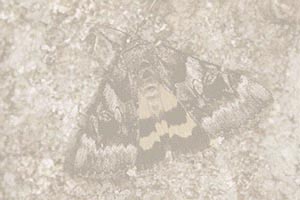|
Taxonomic Notes
The 1983 MONA Checklist of Nearctic Lepidoptera by Hodges et al. recognized 100 Catocala species with 58 subspecies. This was adjusted
to 101 species with 29 subspecies by Gall & Hawks in 2010, with changes driven mainly by reanalysis of wing patterns and type specimens.
The 2023 MONA Checklist by Pohl & Nanz largely maintained those adjustments at 106 species with 30 subspecies (four of the five added
species were described between 2015 and 2017). However, our research during the past 15 years, using mtDNA barcoding
coupled with field work, rearings, genitalic dissections and reassessment of wing morphology, has also led to the recognition of
around a dozen additional new Nearctic Catocala species that are awaiting description. These either represent newly diagnosed and unnamed species or existing names requiring
elevation out of synonymy. Some of the new species are scheduled for publication prior to the MONA Catocala fascicle, and the others are expected to be
adjudicated therein.
On this website we follow the 2023 MONA Checklist as a baseline for Catocala taxonomy, but with subspecific names collapsed into their respective
nominate taxon, and with the following
additional modifications and annotations (in alphabetical order):
babayaga: mtDNA confirms babayaga as a species separate from jessica as does reanalysis of wing pattern and
genitalic characteristics. These two species are largely parapatric, and babayaga is likewise parapatric to the similar and
closely related texanae.
benjamini: some of the named subspecies largely correspond to full species based on a combination of mtDNA and morphological differences, but there
is also an apparently new sympatric species lacking a name. Pending publication addressing this species complex, the map presented here
for benjamini
subsumes all names.
chelidonia: the situation for chelidonia is essentially the same as for benjamini, with the same approach taken here for its map.
erichi: mtDNA reconfirms erichi as a species separate from californica, that is rarely encountered and apparently endemic
to a handful of nearby localities in the San
Bernardino mountains of California. A separate map for erichi is provided here.
faustina: the three subspecies currently listed for faustina reflect two distinct underlying species -- faustina and cleopatra -- based
on mtDNA, morphological, and rearing data. The name allusa represents a largely clinal variant seen within cleopatra in the northwestern portion of its geographic
range. This revised status is reflected in the two maps here, and is alluded to in notes presented in the 2023 MONA Checklist.
frederici: this is a complex of several distinct and undescribed species,
whose status is under active study.
For the present, all records are subsumed on the
frederici map.
euphemia: this is a full species separable from neogama based on mtDNA and morphology, and the revised status is
reflected in a separate map here.
hermia: this name has been associated with Rocky Mountain populations of the wide-ranging and
morphologically variable californica, but mtDNA and rearings indicate hermia is a synonym. Records for hermia are subsumed in
the map for californica. As suggested under erichi, far western populations of californica could use more study.
hippolyta: mtDNA confirms the separation of hippolyta from semirelicta as a species, although there is occasional overlap
in aspects of wing pattern. The former is a coastal California taxon, whereas the latter is largely montane in distribution, occuring throughout the Sierras
and then northward and eastward across the Nearctic.
praeclara: the taxonomic relationship of the two morphologically close and variable species praeclara and alabamae is arguably the most
intractable among the Nearctic Catocala. Additional detail is provided on
the iNat Wishlist page, with the
following takeaway for the maps: (a) records for manitoba and charlottae are subsumed on the map for praeclara; (b) mtDNA
data suggest (confirmatory) association of charlottae with praeclara and (contradictory) association of
manitoba with alabamae.
verrilliana: this is a complex of several distinct species, and the available published names do not fully correspond to geographic
and morphological patterns.
As is true for praeclara,
the taxonomic status of verrilliana is under active study. For the present, records for the as yet unrecognized species are subsumed on the
verrilliana map.
|
